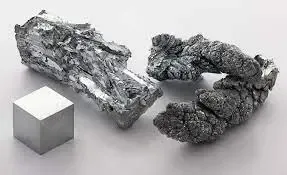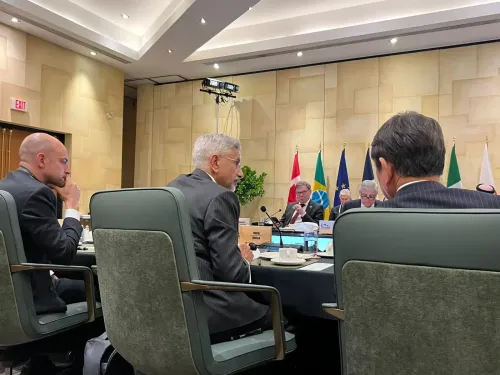Has the Cabinet Rationalised Royalty Rates for 4 Critical Minerals?

Synopsis
Key Takeaways
- Rationalised royalty rates aim to boost local mineral production.
- Graphite is essential for electric vehicle batteries.
- Reduced import dependency can stabilize the economy.
- Job creation is a key outcome of this policy.
- Zirconium has diverse industrial applications.
New Delhi, Nov 12 (NationPress) The Union Cabinet, led by Prime Minister Narendra Modi, has sanctioned the rationalisation of royalty rates for four essential minerals: graphite, caesium, rubidium, and zirconium. The updated royalty rates are as follows: both caesium and rubidium will incur a 2 percent royalty calculated on the average sale price (ASP) of the metal extracted from the ore.
Zirconium will be subject to a 1 percent royalty of ASP, whereas graphite will attract a 2 percent royalty based on an ad valorem system for ore containing 80 percent or more fixed carbon, and 4 percent for ore with less than 80 percent fixed carbon, as per the Cabinet's announcement.
The Cabinet's resolution is expected to stimulate the auction of mineral blocks containing caesium, rubidium, and zirconium, effectively unlocking these minerals along with associated critical resources such as lithium, wolfram, rare earth elements, and niobium, according to an official statement.
Implementing royalty rates for graphite on an ad valorem basis will ensure that pricing variations reflect the mineral's changing market value across different grades.
Enhancing domestic production of these minerals is anticipated to decrease dependency on imports, mitigate supply chain risks, and create job opportunities within the nation.
Graphite, caesium, rubidium, and zirconium play a pivotal role in advanced technology applications and the transition to sustainable energy.
Both graphite and zirconium are recognised as part of the 24 critical and strategic minerals outlined in the Mines and Minerals (Development and Regulation) Act, 1957 (MMDR Act).
As per the Cabinet's details, graphite is essential for electric vehicle (EV) batteries, primarily functioning as the anode material, facilitating high conductivity and charge retention.
However, India currently relies on imports for 60 percent of its graphite needs.
Currently, there are nine operational graphite mines in India, with an additional 27 blocks auctioned. Additionally, the Geological Survey of India (GSI) and Mineral Exploration Corporation Limited (MECL) have transferred 20 graphite blocks for auction, while around 26 blocks are in exploratory stages.
Zirconium serves as a multifunctional metal across various sectors, including nuclear energy, aerospace, healthcare, and manufacturing, due to its remarkable resistance to corrosion and high thermal stability.
Caesium finds its primary application in the high-tech electronics industry, especially in atomic timekeeping devices, GPS technologies, and precision medical instruments, including cancer therapies.
Rubidium is integral to producing specialty glass utilized in fibre optics, telecommunications, and night vision equipment.
vd









